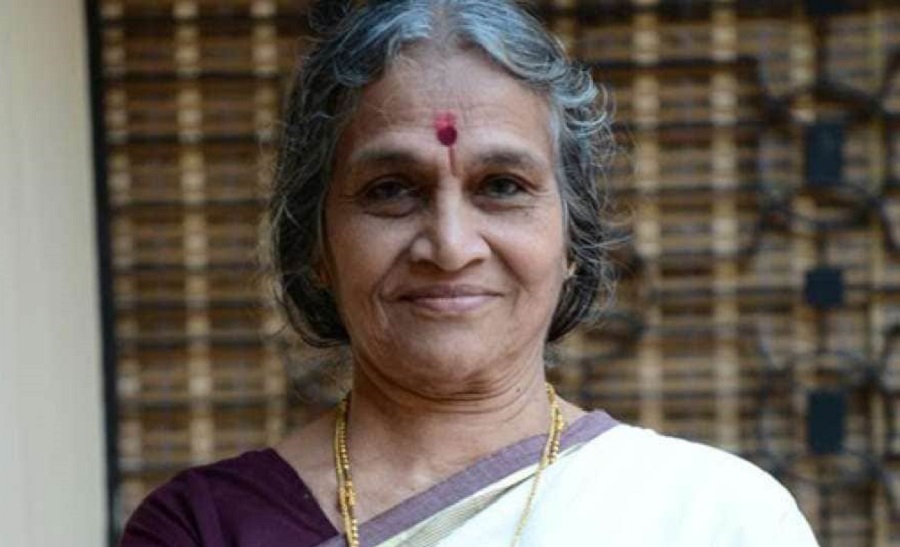Padma Shri Kalamandalam Satyabhama was instrumental in the revival of Mohiniyattam, and her contributions serve as the base for the Kalamandalam style of the art form. Today is her sixth remembrance day.
When the late poet Vallathol Narayana Menon tried to revive the lasya tradition of Mohinyattam, his attempts were considered ‘unethical’ by the prudish owing to its association with the devadasis. Beating all the odds, the poet started a course of the lasya-rich dance form in 1932. But the course had to be discontinued twice due to the dearth of teachers and revived again in 1950 under Thottassery Chinnammu Amma. Five girls joined the course and one among them was Kalamandalam Sathyabhama.
Rest is history. Sathyabhama not only became instrumental in the revival of the art form, giving it a shape and structure but also proved her administrative skill as the first lady vice principal and later the principal of her alma mater. To her credit, she has 35 distinct adavus, 11 padams, 4 basic varnams and many thillanas and group choreographies. More to that, she developed a specific curriculum, modified the costumes, and refined the kutcheri tradition in Mohiniyattam.
Satyabhama was born in 1937 in Shornur, to Ammini Amma, a homemaker, and Krishnan Nair, a businessman. As a child she had a great passion for dance. This took her to Kalamandalam where she was trained under the doyens Kalamandalam Achuta Warrier and Kalamandalam Krishnankutty Warrier in Bharatanatyam. This was only a private arrangement. At the age of 12, in 1949, she became a regular student at the prestigious institution.
When Chinnammu Amma joined as a staff teacher, Satyabhama started learning Mohiniyattam. However classes were held only after the usual hours. Chinnammu Amma taught from memory and could impart only the basics to her students. But Satyabhama was a brilliant student and was soon well-versed in cholkettu, jatiswaram, varnam and padam.
Redefining Mohiniyattam
At the age of 20, Satyabhama became a teacher herself at the school. In the following decades, Satyabhama redefined the movement dynamics of Mohiniyattam, drawing from the lasya aspects of Kathakali and Kaikottikali, but never copied them. The fact that she had learnt Kathakali helped a lot, she is quoted to have said. Satyabhama also re-wrote tradition by interspersing abhninaya and adavu, which were performed consecutively in Mohiniyattam earlier. She was also the one who enriched the multifarious expressions of the love-lorn Nayika.
Swati Tirunal’s Danisamajendra gamini, the much talked Thodi varnam, Manasime parithapam, the Sankarabharanam varnam, Pannagendra sayana, and varnams in ragas Dhanyasi, Kalyani and Sudha Kapi and a host of padams including ‘Viditham the nisavrutham(Surutti)’, Panimathi mukhi bale (Aahiri) and Tharuni njan ( Dwijavanthi) are all examples of Satyabhama’s talent in choreography. Besides the basics, Satyabhama also made innovations in the costume and jewellery of Mohiniyattam, with the help of some of her talented students. The modern-day kondakettu or hair bun of the Mohiniyattam, can be attributed to these experiments, as artists used to wear their hair in a braid earlier. Inspired by Raja Ravi Varma’s paintings on Kerala women, according to her, this innovation frees Mohiniyattam from imitating other dance genres.
Satybhama credits the valuable contributions of various Kalamandalam artists including her husband Kalamandalam Padmanabhan Nair, Killimangalam Vasudevan Namboothiripad, Paimkulam Rama Chakyar and Unnikrishnan Elayath in choreographing the first Mohiniyattam Varnam- none other than the above mentioned Thodi composition of Swati Tirunnal. There were a slew of problems. Even sahithya was not available in full. While Vasudevan Namboothiripad procured the literature, Elayath interpreted the Sanskrit verses skilfully. As for the delineation of the Cupid’s arrows and similar feats, Rama Chakyar’s suggestions were precious.
Continuing The Tradition
Apart from prestigious Padma Shri in 2014, she was awarded the Kerala Sangeetha Nataka Akademi award in 1976 which was followed by the award from Sangeet Nataka Akademi, Delhi. She was also the first recipient of the Nruthya Natya Puraskaram of the Kerala Government in 2005. Kerala Kalamandalam also honoured her with its award in 1988.
She passed away at the age of 77 in Shornur in 2015. Her daughter Lathika is a dance teacher. Most of today’s mohiniyattam gurus and performers are either her direct disciples or grand and great grand disciples. Mohiniyattam has seen many innovations since, but Satyabhama believed in its purity, and retained the original lasya tradition in all its beauty, without attempting to dilute it to suit conservative tastes.
Write to us at editor@indiaartreview.com


1 Comment
One of the finest articles about the maestro of Mohiniyattam



